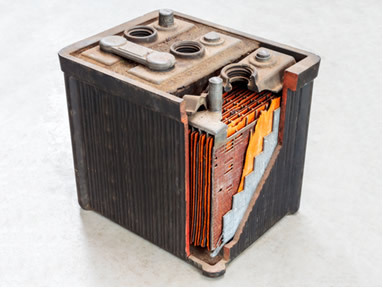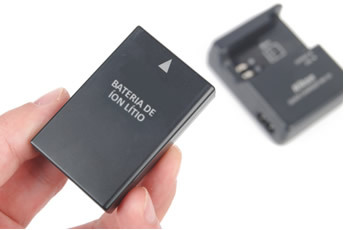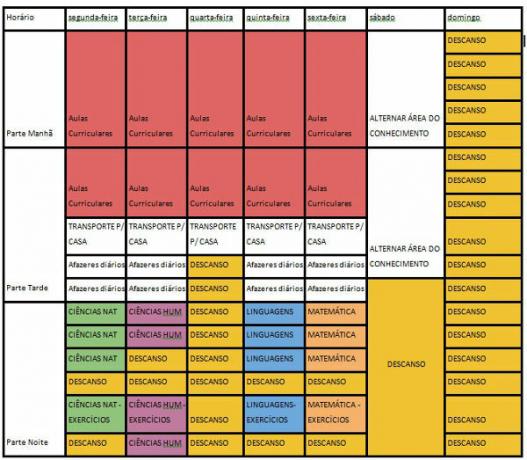Cells and batteries are devices that transform chemical energy (through oxidation-reduction reactions) into electrical energy. They can be classified into two types: primaries and secondary.
Primary cells and batteries are those that cannot be recharged. Once the electron transfer reaction ceases, the cell stops functioning, as its reactions are not reversible.
Already batteries and secondary batteries are rechargeable and can be used over and over again.. See the two main examples of secondary batteries:
- Car battery (lead/lead oxide battery):
This battery is formed by lead plates (Pb) connected to the negative connector and placed interspersed with lead plates covered with lead dioxide (PbO2) which, in turn, are connected to the positive connector. Both are immersed in an aqueous solution of sulfuric acid (H2ONLY4) with 40% by mass, which works as the electrolyte (conductive solution of ions).

Lead is the negative electrode or anode that oxidizes, losing electrons, and lead dioxide works as the positive electrode, cathode, which reduces itself, gaining electrons:
Anode Half Reaction: Pb +HSO41-+ H2O ↔ PbSO4 + H3O1+ + 2e-
Cathode Semi-Reaction: PbO2 + HSO41-+ 3H3O1+ + 2e-↔ PbSO4 + 5 hours2O
Overall reaction: Pb + PbO2 + 2 HSO41-+ 2 H3O1+↔ 2 PbSO4 + 4 H2O
As sulfuric acid is consumed, the battery will discharge. But these battery discharge reactions shown above are reversible. Since reverse reactions are not spontaneous, it is necessary to supply a continuous electrical current through a generator such as an alternator or a dynamo. Thus, these reactions occur in the opposite direction, regenerating the sulfuric acid and allowing the battery to be used again.

Car batteries are usually recharged by the vehicle's dynamo. Energy is supplied by the movement of the engine through the alternator, which has a dynamo, whose function is to transform mechanical energy into electrical energy. This recharge needs to be done frequently because this type of battery is often discharged.
The density of the acid solution shows us the degree of battery discharge, if the density is less than 1.20 g/cm3, it is unloaded, but if it is equal to 1.28 g/cm3, it is loaded.
For more details about this type of battery, read the text Car lead battery.
- Cell phone battery (lithium ion battery):
This battery represents the most modern energy conversion system, being widely used in portable electronic equipment, especially in cell phones.
Briefly, the cathode or positive pole of this battery is lithium oxide and cobalt, and the anode or negative pole is composed of carbon (graphite). Its operation is based on the movement of lithium ions from the anode to the cathode through the electrolyte, which is a non-aqueous solvent:
Anode Half Reaction: LiyÇ6(s) → y Li + Ç6+y-
Cathode Semi-Reaction: LixCoO2(s) + y read+(s) + y and- → I readx+yCoO2(s)
Global Reaction: LiyÇ6(s) + readxCoO2 → C6(s) + readx+yCoO2(s)
These reactions are reversible, so these batteries can be recharged if placed in a device. which conducts electrical current and causes the reverse reaction, in which lithium ions will migrate from the oxide to the graphite.

The text Lithium Batteries and Batteries explains the operation of these devices in detail.
By Jennifer Fogaça
Graduated in Chemistry
Source: Brazil School - https://brasilescola.uol.com.br/quimica/pilhas-baterias-secundarias.htm



